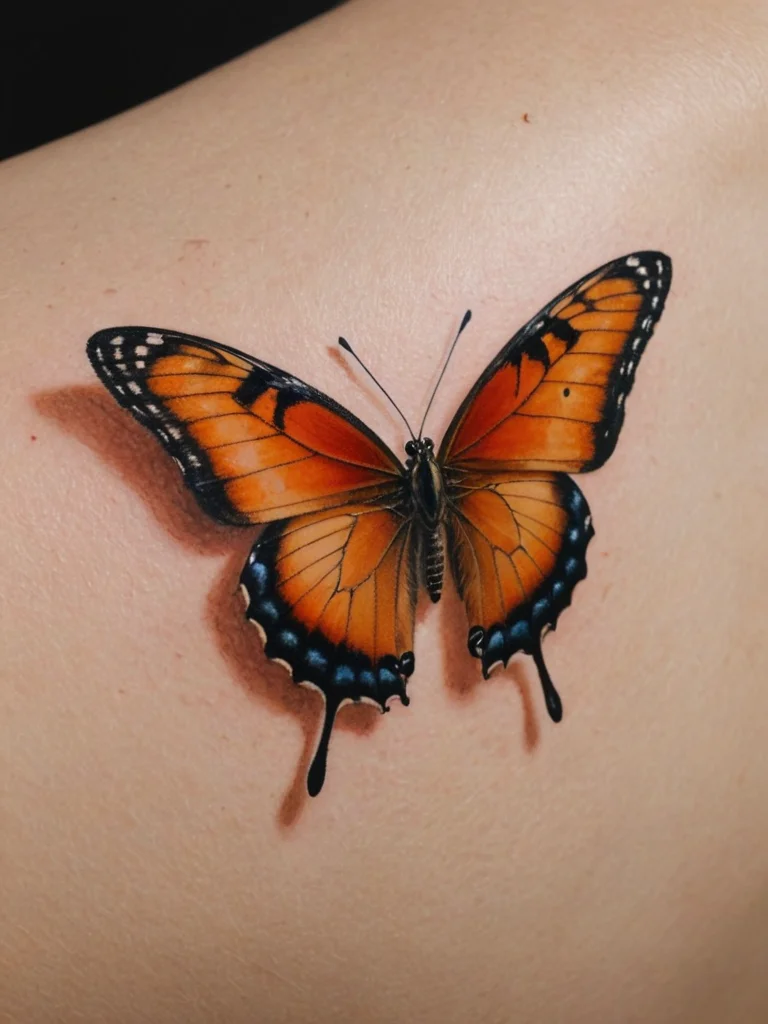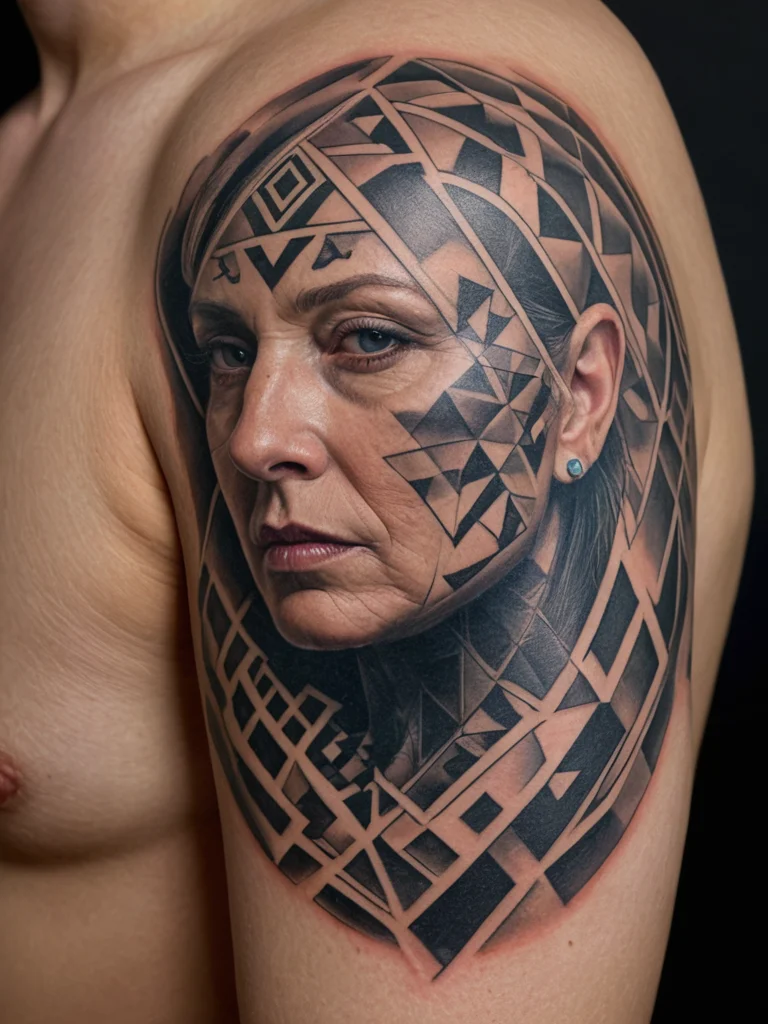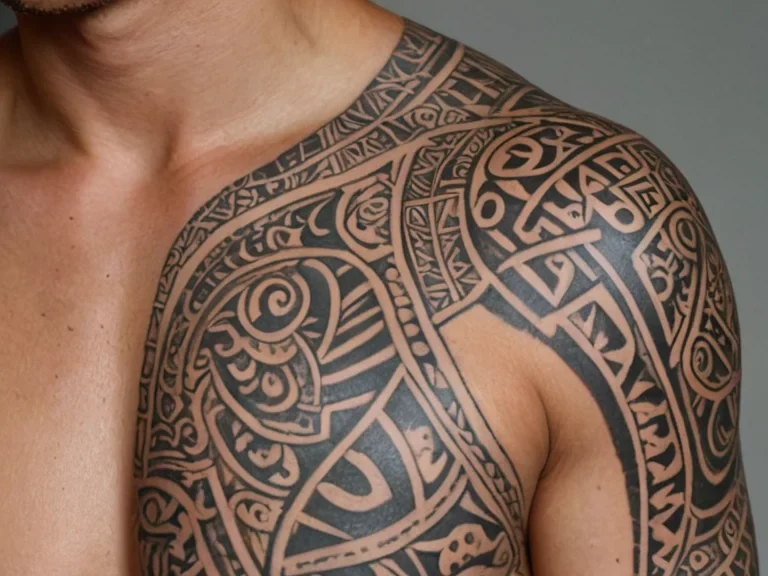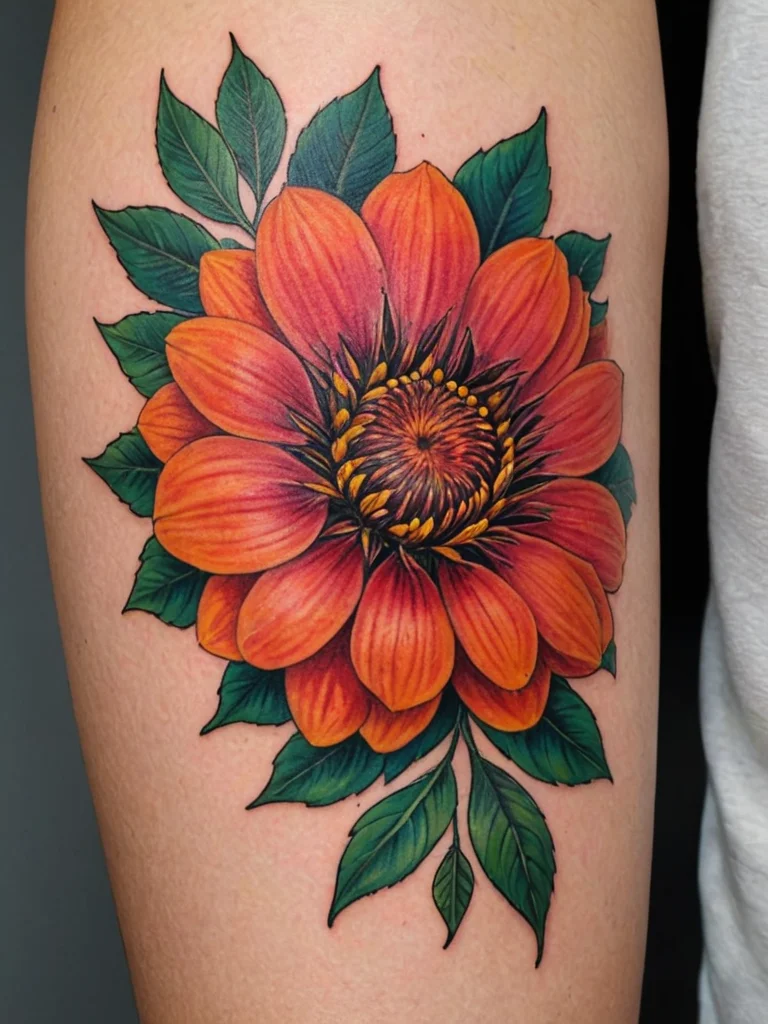For many individuals, tattoos are far more than mere aesthetic decorations; they are profound expressions of identity, resilience, and personal narrative. They can mark significant life events, honor loved ones, or simply celebrate the beauty of art on the human canvas. However, when that canvas has undergone a profound transformation, such as a skin graft, a crucial and often complex question arises: can you get a tattoo over a skin graft? The answer, while not a simple yes or no, is nuanced, leaning towards a cautious optimism tempered by an absolute necessity for expert consultation and meticulous planning. It is a journey that requires understanding the very fabric of the repaired skin, acknowledging its unique characteristics, and approaching the artistic process with unparalleled precision and patience.
Understanding your skin graft: key factors affecting tattoo possibility

Before even contemplating the possibility of tattooing over a skin graft, it is absolutely paramount to understand the nature, maturity, and specific characteristics of the grafted tissue itself. A skin graft is not merely a ‘patch’ of new skin; it is a complex biological reconstruction, and its integrity, sensation, and vascularity will profoundly influence its suitability as a tattoo canvas. Tattoo artists, in collaboration with medical professionals, consistently emphasize that the success of a graft tattoo hinges heavily on these foundational elements.
- Type of skin graft: There are various types of skin grafts, each with distinct properties that impact tattooing. Split-thickness skin grafts (STSGs) involve the removal of the epidermis and a portion of the dermis. These grafts are thinner and often appear shinier, smoother, and less pigmented than the surrounding skin. Their thinner nature means they have a more delicate blood supply and are more prone to contraction and scarring. Tattooing over STSGs can be particularly challenging due to their reduced elasticity and fragility. Full-thickness skin grafts (FTSGs), on the other hand, involve the entire epidermis and dermis. These grafts tend to be thicker, more durable, and more closely resemble the original skin in texture and color, making them generally more amenable to tattooing. However, their larger donor site scars can be a consideration. Furthermore, flap grafts, which include skin, subcutaneous tissue, and sometimes muscle, are even more robust due to their preserved blood supply. While medically more complex, their superior vascularity can make them a more stable, though often more textured, canvas for ink. Understanding which type of graft you have received is the very first step in assessing its tattoo potential.
- Maturity of the graft: Time is a critical healer, and this holds especially true for skin grafts. A newly grafted area is highly vulnerable, lacking the robust dermal structure and mature blood supply necessary to withstand the trauma of tattooing. Most medical experts and experienced tattoo artists recommend waiting a significant period—typically at least 18 to 24 months, and often longer—before considering any tattoo work on grafted skin. This extensive waiting period allows the graft to fully settle, for collagen fibers to mature, for nerve endings to regenerate (to some extent), and for the blood supply to stabilize and strengthen. Attempting to tattoo an immature graft dramatically increases the risks of ink rejection, severe scarring, infection, and poor tattoo quality. It’s akin to trying to paint on a still-wet canvas; the outcome will be unpredictable and likely unsatisfactory.
- Location and size of the graft: The anatomical location of the graft plays a significant role in its suitability for tattooing. Grafts over joints, areas of high movement (like elbows or knees), or areas subjected to constant friction are inherently more challenging. These areas experience more stretching and compression, which can impact ink retention and the long-term appearance of the tattoo. Similarly, larger grafts, or those that span multiple planes or body parts, present a more complex canvas. The variability in scar tissue density, underlying muscle movement, and potential for uneven healing across a large area means that a uniform tattoo application can be incredibly difficult to achieve. Small, stable grafts on flatter, less mobile areas of the body generally present a more favorable scenario for tattooing.
- Vascularity and sensation: A healthy blood supply is absolutely vital for the healing process of any tattoo. In grafted skin, particularly split-thickness grafts, the vascular network can be significantly compromised or different from normal skin. Poor vascularity can lead to inadequate ink absorption, delayed healing, and an increased risk of infection and tissue necrosis. Additionally, nerve regeneration in grafted areas is often incomplete, leading to altered or absent sensation. While this might seem advantageous for pain tolerance during tattooing, it also means that the individual cannot provide immediate feedback on sensation, which could be a subtle indicator of undue stress on the tissue. An experienced artist will proceed with extreme caution, often using a lighter hand and smaller needle groupings, to minimize trauma to the delicate vascular structures.
- Texture and pigmentation: Grafts often have a unique texture, ranging from smooth and shiny to thick, ropy, or irregular scar tissue. They may also be hyperpigmented (darker) or hypopigmented (lighter) than the surrounding skin. These textural and color variations present considerable challenges for tattoo artists. Ink may sit differently in the varied tissue densities, leading to uneven color saturation and blurred lines. Areas of hyperpigmentation might ‘absorb’ or alter the appearance of certain ink colors, while hypopigmented areas might make colors appear overly vivid or stark. A skilled artist must be adept at working with these inconsistencies, often requiring specialized techniques and a deep understanding of color theory to achieve a visually cohesive and appealing result. The artist’s ability to ‘read’ the skin and adapt their technique accordingly is paramount.
Weighing the odds: potential risks and challenges of graft tattoos

While tattooing over a skin graft is indeed possible, it is crucial to approach this decision with a comprehensive understanding of the elevated risks and unique challenges involved. This is not a standard tattooing procedure; it is a specialized art form performed on a compromised canvas. Both medical professionals and seasoned tattoo artists concur that thorough risk assessment is non-negotiable, and managing expectations is paramount.
- Increased risk of infection: Grafted skin, by its very nature, often has a reduced blood supply and a less robust immune response compared to healthy skin. This makes it significantly more susceptible to bacterial infections during and after the tattooing process. A minor infection that might be easily managed on healthy skin could escalate rapidly on a graft, potentially leading to serious complications, including cellulitis, abscess formation, or even systemic infections requiring hospitalization. Strict adherence to aseptic techniques by the artist, rigorous aftercare by the client, and prompt medical attention for any signs of infection are absolutely critical.
- Poor ink retention and unpredictable healing: One of the most common challenges is the unpredictable way grafted skin accepts and retains ink. The altered collagen structure and varying tissue densities within the graft mean that ink may ‘fall out’ in certain areas, migrate, or appear blotchy and uneven. The healing process can also be protracted and less predictable. Instead of a smooth, uniform fade, you might experience patchy healing, excessive scabbing, or even ulceration in particularly fragile areas. This can lead to a tattoo that looks faded, patchy, or distorted even after initial healing, often necessitating multiple touch-up sessions or, in some unfortunate cases, resulting in a design that simply cannot be effectively executed on that specific canvas.
- Scarring and tissue damage: The tattooing process itself is a form of controlled trauma. On healthy skin, the body typically repairs this trauma efficiently. On grafted skin, however, the response can be exaggerated. There is a heightened risk of developing hypertrophic scars (raised, red scars confined to the original wound) or keloids (raised scars that extend beyond the original wound boundaries). The delicate nature of some grafts also means there’s a risk of tearing the tissue, causing new wounds, or even compromising the integrity of the graft itself, which could lead to necrosis (tissue death) if the blood supply is severely disrupted. These outcomes are not merely aesthetic concerns but can represent significant medical complications.
- Distortion of the design: The unique texture, contours, and flexibility of grafted skin can significantly impact the final appearance of the tattoo design. Lines might appear jagged, colors might not saturate uniformly, and intricate details can become blurred or lost. If the graft is prone to contraction or has an irregular surface, a symmetrical or precise design can easily become distorted as the skin moves or changes. An experienced artist will understand these limitations and often recommend designs that are less intricate, more fluid, or abstract, allowing for the natural variations of the skin to become part of the art rather than a detractor. They might also advise against designs with very fine lines or extreme detail, recognizing the limitations of the canvas.
- Altered sensation and pain management: While some grafted areas may have diminished sensation, others might experience hypersensitivity, paresthesia (tingling or numbness), or neuropathic pain. This makes pain management during tattooing particularly challenging. What might be tolerable for a person with healthy skin could be intensely painful or surprisingly numb for someone with a graft, making it difficult for the artist to gauge the client’s comfort or the tissue’s response. It is vital to communicate any sensations immediately and openly with your artist. Furthermore, the trauma of tattooing, even if not immediately painful, can sometimes exacerbate existing nerve pain or create new discomfort in the long term.
- Long-term aesthetic changes: Even if a graft tattoo heals well initially, the grafted skin itself is a dynamic entity that can continue to change over time due to aging, sun exposure, weight fluctuations, or further scarring. These long-term changes can affect the appearance of the tattoo, leading to fading, blurring, or distortion years down the line. The tattoo may ‘age’ differently than tattoos on healthy skin, requiring more frequent touch-ups or presenting unforeseen aesthetic challenges as the graft matures and changes.
Your blueprint for success: preparing for and getting a skin graft tattoo

Embarking on the journey to tattoo over a skin graft is a significant undertaking that requires meticulous preparation, extensive research, and a commitment to patience. This is not a decision to be rushed, nor is it a procedure for just any tattoo artist. Your blueprint for success will involve a multi-faceted approach, prioritizing health, expertise, and realistic expectations every step of the way.
- Medical clearance is non-negotiable: This is the absolute first and most critical step. Before you even think about booking a consultation with a tattoo artist, you must obtain full medical clearance from the physician or surgeon who performed your skin graft, or another qualified dermatologist or plastic surgeon. They are the only ones who can accurately assess the current health of your graft, its vascularity, the extent of nerve regeneration, and any underlying medical conditions that might contraindicate tattooing. Be prepared for a thorough examination and to discuss the specific risks involved in your unique case. This medical green light is not just a formality; it is an essential safeguard for your health and the potential success of the tattoo. Without it, no reputable tattoo artist should even consider working on your graft.
- Finding the right tattoo artist: This is arguably the most crucial decision you will make after obtaining medical clearance. You cannot simply walk into any tattoo shop. You need to find an artist with specific, demonstrable experience tattooing over scar tissue, and ideally, specifically over skin grafts. Look for artists who:
- Have a portfolio showcasing work on scarred or grafted skin: This is visual proof of their expertise. Look for healed work, not just fresh tattoos, as healed results will give you the best indication of their success.
- Demonstrate a deep understanding of skin anatomy and scar tissue: They should be able to articulate the challenges and considerations involved.
- Are willing to work in close consultation with your medical team: A truly professional artist will be open to communicating with your doctor to ensure the safest possible approach.
- Prioritize hygiene and sterile practices above all else: Given the increased risk of infection, an artist’s commitment to a sterile environment and single-use equipment is paramount.
- Are known for a gentle touch and patience: Tattooing graft tissue requires a lighter hand and often multiple, shorter sessions rather than one long one, to minimize trauma.
Ask for referrals from your medical team, patient support groups, or reputable tattoo communities. Do not compromise on this step; the wrong artist can lead to irreversible damage and disappointment.
- Initial consultation and patch testing: Once you’ve identified a potential artist, schedule an in-depth consultation. This meeting is crucial for discussing your goals, the artist’s approach, and to allow the artist to thoroughly examine your graft. They will assess its texture, thickness, vascularity, and flexibility. During this consultation, the artist should outline realistic expectations regarding ink retention, potential for blurring, and the final appearance of the tattoo. It is highly recommended to undergo a small patch test in an inconspicuous area of the graft. This allows both you and the artist to observe how your specific graft tissue reacts to the ink, how it heals, and how the colors settle. It can provide invaluable insight into the viability of the larger tattoo and help prevent widespread disappointment or complications. Be prepared for the artist to recommend a design that works with the graft’s unique characteristics, rather than fighting against them.
- Design considerations for graft tattoos: The design choice is more critical than ever when tattooing over a graft. Intricate details, fine lines, or highly realistic portraits can be incredibly challenging to execute successfully on uneven or textured skin. Instead, artists often recommend:
- Organic, flowing designs: These can gracefully adapt to the contours and irregularities of the graft without appearing distorted.
- Bold lines and shading: These tend to hold up better and appear more consistently than delicate work, which can easily blur or fade.
- Color choices: Consider how colors might interact with any underlying pigmentation in the graft. Sometimes, working with the existing tones rather than trying to completely mask them can lead to a more harmonious result.
- Abstract or textural designs: These can beautifully incorporate the graft’s unique texture as part of the art piece, turning a perceived imperfection into an intentional design element.
The goal is often to enhance or integrate the graft, rather than trying to perfectly hide or erase its presence.
- Pre-tattoo preparation: Once the medical clearance is obtained, the artist selected, and the design finalized, there are still steps you can take to optimize your body for the tattooing process. Ensure you are well-rested, hydrated, and have eaten a substantial meal before your appointment. Avoid alcohol and blood-thinning medications (unless medically necessary and cleared by your doctor) in the days leading up to the session. Keep the grafted area meticulously clean and moisturized, using products recommended by your medical team or artist, to ensure the skin is in its optimal condition for tattooing. This preparation significantly contributes to both comfort during the session and the subsequent healing process.
- During the tattoo session: Be prepared for a different experience than tattooing on healthy skin. The artist may use a lighter touch, fewer passes, and potentially different needle configurations to minimize trauma. Sessions might be shorter to avoid overworking the delicate tissue. Communication is absolutely vital. If you feel any unusual pain, discomfort, or sensations, inform your artist immediately. They will constantly monitor the skin’s reaction, looking for signs of distress or excessive bleeding. Patience from both client and artist is paramount throughout the process.
Beyond the chair: realistic expectations and long-term care for graft tattoos

The journey of a skin graft tattoo does not end when you leave the tattoo studio. In fact, that’s just the beginning of a crucial healing and adaptation phase. Managing your expectations and committing to diligent long-term care are just as vital as the initial consultation and tattooing process. Grafted skin will always behave differently from healthy skin, and understanding these nuances is key to appreciating your unique body art.
- Healing process and aftercare: The healing process for a tattoo on grafted skin is often more protracted and less predictable than on healthy skin. While a typical tattoo might heal in 2-4 weeks, a graft tattoo could take several weeks to months for the initial healing, and even longer for the graft to fully settle with the new ink. It is absolutely crucial to follow your tattoo artist’s and potentially your medical professional’s aftercare instructions to the letter. This typically involves:
- Gentle cleaning: Washing the tattooed area gently with an unscented, antibacterial soap, typically 1-2 times a day.
- Moisturizing: Applying a thin layer of unscented, tattoo-specific lotion or ointment to keep the skin hydrated and prevent excessive dryness or cracking.
- Avoiding submersion: No baths, swimming pools, hot tubs, or prolonged showers for the entire initial healing period to prevent infection.
- Sun protection: Absolutely no direct sun exposure. UV rays can cause significant damage, alter ink colors, and hinder healing on delicate graft tissue.
- Avoiding friction and picking: Protect the area from tight clothing, rubbing, or any action that could irritate the healing skin or dislodge scabs.
- Healing process and aftercare: The healing process for a tattoo on grafted skin is often more protracted and less predictable than on healthy skin. While a typical tattoo might heal in 2-4 weeks, a graft tattoo could take several weeks to months for the initial healing, and even longer for the graft to fully settle with the new ink. It is absolutely crucial to follow your tattoo artist’s and potentially your medical professional’s aftercare instructions to the letter. This typically involves:
Any deviation from these guidelines significantly elevates the risk of infection, poor healing, and compromised tattoo quality. Be vigilant for any signs of infection, such as excessive redness, swelling, warmth, pus, or fever, and seek immediate medical attention if they appear.
- Realistic expectations for the outcome: One of the most important aspects of getting a tattoo over a graft is cultivating realistic expectations. It is highly unlikely that the tattoo will look exactly the same as it would on unblemished skin. The unique characteristics of the graft—its texture, elasticity, and pigmentation—will always influence the final appearance of the tattoo. You might observe:
- Variations in ink saturation: Some areas might hold ink more densely, while others appear lighter or more translucent.
- Potential for blurring or spreading: Especially with fine lines, the ink can sometimes ‘bleed’ or spread slightly within the scar tissue.
- Altered color appearance: The underlying color of the graft can subtly (or not so subtly) influence the perceived color of the ink, particularly with lighter shades.
- Differences in texture: The tattoo will conform to the existing texture of the graft, meaning it might not be perfectly smooth or uniform.
- Realistic expectations for the outcome: One of the most important aspects of getting a tattoo over a graft is cultivating realistic expectations. It is highly unlikely that the tattoo will look exactly the same as it would on unblemished skin. The unique characteristics of the graft—its texture, elasticity, and pigmentation—will always influence the final appearance of the tattoo. You might observe:
Embrace these unique qualities as part of your personal story and the art itself. A skilled artist will work with these challenges to create a beautiful piece, but it will be a piece that reflects the canvas it’s on.
- The possibility of touch-ups and revisions: Due to the unpredictable nature of how grafted skin accepts and retains ink, it is highly probable that your tattoo will require one or more touch-up sessions. These sessions are not a sign of a bad tattoo; rather, they are a common and often necessary part of the process for graft tattoos. The artist will use these sessions to reinforce colors, refine lines, and address any areas where ink retention was suboptimal. Be prepared for this possibility, and factor it into your overall time and financial commitment. In some rare cases, if the graft reacts poorly, or if the tattoo does not meet the revised expectations, a revision or even partial removal might be considered, though these are complex procedures on grafted skin.
- Long-term care and maintenance: A tattoo on a skin graft requires lifelong vigilance. The grafted skin will always be more sensitive to environmental factors and trauma. Continued diligent care includes:
- Consistent sun protection: Always use a high SPF sunscreen on the tattooed graft, even on cloudy days. Sun exposure can accelerate fading, exacerbate textural changes, and damage the delicate skin.
- Regular moisturizing: Keep the area well-hydrated to maintain skin elasticity and overall health.
- Monitoring for changes: Regularly inspect the tattooed graft for any unusual changes in color, texture, or sensation. Report any concerning observations to your dermatologist or general practitioner.
- Healthy lifestyle: Maintaining good overall health, including proper nutrition and hydration, supports the long-term integrity of all your skin, including grafted areas.
By understanding these long-term considerations, you can ensure that your tattoo remains a vibrant and meaningful part of your story for years to come.
Ultimately, tattooing over a skin graft is a testament to resilience, a powerful act of reclaiming and transforming one’s body. While it presents unique challenges and demands an unparalleled level of expertise and patience, for those who navigate the process with diligence and realistic expectations, the result can be an incredibly rewarding and deeply personal work of art.